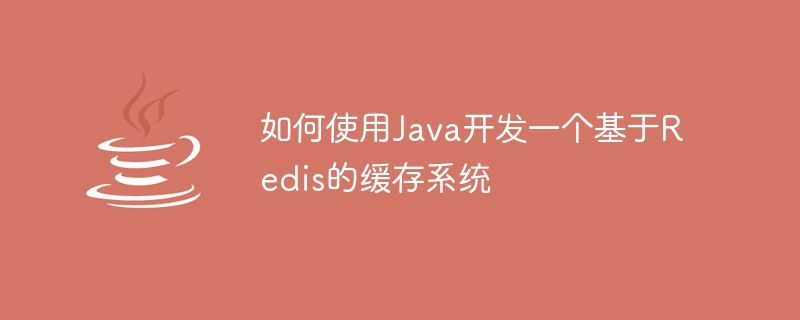Home >Java >javaTutorial >How to develop a Redis-based caching system using Java
How to develop a Redis-based caching system using Java
- 王林Original
- 2023-09-20 11:12:361152browse

How to use Java to develop a Redis-based cache system
Introduction:
In the actual development process, using the cache system can significantly improve the performance of the system and response speed. As a high-performance NoSQL database, Redis is widely used in cache systems. This article will introduce in detail how to use Java to develop a Redis-based cache system and provide corresponding code examples.
Step 1: Introduce the Redis dependency library
First, add the Redis dependency library to the project's pom.xml file, as follows:
<dependencies>
<!-- 引入Jedis依赖库 -->
<dependency>
<groupId>redis.clients</groupId>
<artifactId>jedis</artifactId>
<version>3.6.1</version>
</dependency>
</dependencies>Step 2: Create a Redis connection
There are many ways to create a Redis connection in Java code, the most common of which is using the Jedis client. The following code example shows how to use Jedis to connect to a Redis database:
import redis.clients.jedis.Jedis;
public class RedisCache {
private Jedis jedis;
public RedisCache() {
// 创建Redis连接
jedis = new Jedis("localhost", 6379);
// 如果Redis设置了密码,需要通过以下方式连接
// jedis.auth("password");
}
// 根据需要添加其他操作方法
// 关闭Redis连接
public void close() {
jedis.close();
}
}Step 3: Implement cached reading and writing
Next, we need to implement cached reading and writing functions. The following code example shows how to write data to the Redis cache and read data from the cache:
public class RedisCache {
// ...
// 将数据写入缓存
public void put(String key, String value) {
jedis.set(key, value);
}
// 从缓存中读取数据
public String get(String key) {
return jedis.get(key);
}
// ...
}Step 4: Apply the cache system
Finally, use the cache system in the actual application. The following code example shows how to use the Redis cache system in a Java application:
public class Main {
public static void main(String[] args) {
// 创建Redis缓存对象
RedisCache cache = new RedisCache();
// 向缓存中写入数据
cache.put("key1", "value1");
// 从缓存中读取数据
String value = cache.get("key1");
System.out.println(value);
// 关闭Redis连接
cache.close();
}
}Summary:
This article introduces how to use Java to develop a Redis-based cache system. By introducing Redis dependency libraries, creating Redis connections, implementing cache read and write functions, and using the cache system in applications, we can easily improve system performance and response speed. I hope this article can be helpful to readers and deepen their understanding of the Redis cache system.
The above is the detailed content of How to develop a Redis-based caching system using Java. For more information, please follow other related articles on the PHP Chinese website!

